No Fat Vegans
Those of you who’ve been reading my posts for awhile might remember my critique of The China Study a couple of years back. Keeping in mind that my criticism was directed mostly at the book, not at the concepts it presented, I try to keep an open mind. In fact, here at home, the majority of what I eat tends to be vegetarian, often even vegan – and here and there a bit of seafood and chicken. We virtually never eat red meat at home, well, I don’t, sometimes on request I’ll cook it up for Henry. It isn’t an ethical commitment, it’s simply I tend to feel better without eating it – I’ll still indulge on occasion if we’re out and about, but it’s rarer and rarer.
Anyway, that book and another, which I’m going to get to today, led to viewing the movie Forks Over Knives – it’s not a movie that presents any particularly new information, but given that a large percentage of the population wouldn’t pick up a book of the genre, it’s a film that they might. Well, probably not unless it airs on television because let’s face it, the likelihood is that the only people who saw it were people already interested and quite possibly committed or thinking about a change in diet. What’s particularly noteworthy is that the movie is pretty much based on these two books and the work of the two authors, both of whom, though they quote each other’s work, and know each other, like to claim that they’re the only person really out there making an effort to change things. Book publicity I suppose.
What I really should do is just tell you to go read the other critique. Why? Because I could almost copy it here. Okay, there’s some different focus, the studies are different, this book is actually better written and a more interesting read, and, the author’s wife packs the last section with recipes. But, Caldwell B. Esselstyn, Jr., M.D.’s Prevent and Reverse Heart Disease: The revolutionary scientifically proven, nutrition-based cure in many ways might as well be the same book.
Again with the bludgeoning, though at least here the good doctor swaps back and forth between the phrases “plant-based nutrition” and “plant-based diet” almost as fast as Mitt Romney can switch positions on an issue. He does go a step further than the vegan diet recommended by T. Colin Campbell, PhD – he goes for full on vegan plus – eliminating chocolate, nuts, avocados, and plant-based oils (though, strangely, after deriding all types of nuts in several places, other than walnuts, which he considers acceptable, the recipes in the book often make use of nut milks…). In fact, if one gets to the end, while not officially limited to it, the recommendations are so overwhelmingly restrictive that only the most dedicated would follow them – “It is helpful to keep breakfast and lunch simple – and nearly the same every day.” The breakfast recommendations were pretty much all variations on oatmeal made with fruit juice instead of water or milk, and the lunches were pretty much undressed green salads. Example dishes touted for dinnertime include black beans and rice that we could eat just as is, every single night, and apparently be perfectly happy about, or maybe the much touted bowl of boiled, unseasoned kale.
But back to some of the science. Thankfully, the book isn’t as loaded with numbers and graphs as the other one, part of what makes it easier to read. Instead, it’s basically chapter after chapter of personal anecdotes and those of the doctor’s patients who participated in his scientific study. Here’s, however, where I get all uppity about the numbers. You see, that revolutionary (as if no vegan before had ever suggested that a switch to the diet could be beneficial healthwise) scientifically proven study consisted of 24 people. Well, really 18 people because 6 of the folk who agreed to be in the study gave it up as a bad thing after a brief fling at it. There was no control group to compare against, the doc’s clinic decided that wasn’t in the budget. There was no accounting for any other life changes – in fact the doc specifically poo-poos the idea that exercise is all that important because he’s not familiar with any studies proving that exercise is good for heart disease. His statement, not mine. Yet, he notes, anecdotally, that all of his patients became more active and got into exercise – he considers it an after-effect of the diet and it’s cure, rather than an adjunct cause.
And while he studied those 18 folk over a long period, a couple of decades, his studies are based on self-reporting. Oh yes, he drew blood and did laboratory analyses, but he relied on the patients in his study to account for how well they stuck to the diet. And he’s quite sure they all did because they told him they did, and why would they have any reason to lie about it? Certainly not his admonition that anyone who reported straying from the diet would be dismissed from the study…. Strangely, in a moment of candor, he admits that he strays from the diet himself – claiming just once a year on New Year’s Eve when he binges out on Reese’s Peanut Butter Cups. Sure, I buy that. Just once a year. But of course, none of the patients would do such a thing. Right?
To be honest, at the end of the book I think I’d be less likely to even consider a vegan diet than at the beginning, unless I was in the dire circumstances of one of his patients. Oh, did I forget to mention that they 18 folk who participated were all basically at death’s door, their regular docs had told them to put their affairs in order and go home and die. These were folk who had had multiple heart attacks, bypasses, were on major medications, and nothing was working, so perhaps, just perhaps, they had some impetus for doing something truly radical. Interestingly, he does go back and mention that twenty years on he followed up on those six folk who walked out on the study and one had died and five of them still had heart problems. Ummm, wait, these were people who were supposed to be all dead within minutes if they didn’t participate in the study. Right?
So, another diet book written to spout a philosophy that no doubt has some validity behind it, but isn’t really doing much of anything but lining the author’s pockets. If he was as truly committed to what he claims to be committed to as he says he is, he’d be putting the information out there for free.
Maybe I should take on critiquing one of the diet books at the other end of the spectrum – a little Paleo or South Beach or something of that sort… hmmm.
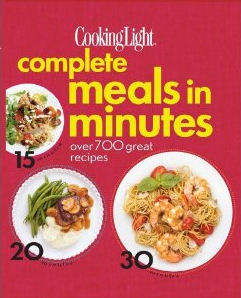 I don’t use cookbooks as recipe books directly in the kitchen. By that I mean that it’s rare that I would ever have a cookbook sitting on the kitchen counter, open to a page, with, likely, something holding down each side of the book so it stayed open while I refer to it back and forth. It’s just not the way I cook, but that gets back to what I do for a living and how I approach it. So it took me a moment to realize that the design of this book as a ring binder had multiple positive things about it as opposed to just taking up extra space over a normally bound book. You can open it and the pages lay flat, you can remove a single page and just have that in the kitchen with you, you can add to it with additional pages if you want, though the last, with 700+ recipes already in the binder, might be a bit of overstuffing. It’s eminently practical.
I don’t use cookbooks as recipe books directly in the kitchen. By that I mean that it’s rare that I would ever have a cookbook sitting on the kitchen counter, open to a page, with, likely, something holding down each side of the book so it stayed open while I refer to it back and forth. It’s just not the way I cook, but that gets back to what I do for a living and how I approach it. So it took me a moment to realize that the design of this book as a ring binder had multiple positive things about it as opposed to just taking up extra space over a normally bound book. You can open it and the pages lay flat, you can remove a single page and just have that in the kitchen with you, you can add to it with additional pages if you want, though the last, with 700+ recipes already in the binder, might be a bit of overstuffing. It’s eminently practical.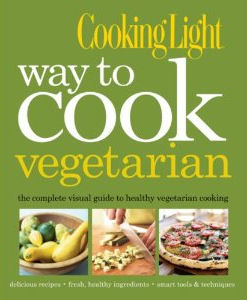 The second book from the same publishers I both like more and less than the first. The book itself – Cooking Light: way to cook vegetarian is a straightforward hardcover. Now that I’m enamored of the ring binder that is the first book, this one loses points, but only in comparison. On the other hand, it’s not just a recipe book. It’s a book to sit down and read, because it’s got some good material in there – so it gets those points back.
The second book from the same publishers I both like more and less than the first. The book itself – Cooking Light: way to cook vegetarian is a straightforward hardcover. Now that I’m enamored of the ring binder that is the first book, this one loses points, but only in comparison. On the other hand, it’s not just a recipe book. It’s a book to sit down and read, because it’s got some good material in there – so it gets those points back.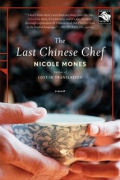 First up was the reading for total pleasure. I’d run across references to the book The Last Chinese Chef by Nicole Mones, in various spots on the internet – I think I even used a quote from the book as part of one of my posts not that long ago. It sounded completely intriguing, and then a couple of food biz friends recommended it highly. I do the same. By turns a romance, a food book (and I’m already tracking down recipes to try out, some of which the author provides on her website), a personal narrative from several perspectives, and even a touch of suspense, the book is well crafted, an enjoyable read – not a completely light, easy reading book, but not overly intellectual either. Initially I thought it was a little… fluffy… when it started out – the narrative part, at times, does have a sort of harlequin romance character to it – but it quickly becomes clear this is intentional and meant to reflect the proponent’s personality more than anything else – sections that are narrated from the point of view of other characters take on an entirely different style, tone and quality of writing – it’s clear that Ms. Mones can write well, and chooses simply to use a lighter style of writing for the first character introduced. I never read her other book for which she is famous – Lost in Translation – I hated the movie, but then, never judge a book by its movie… you know? Highly recommended reading material for anyone who likes food and cooking.
First up was the reading for total pleasure. I’d run across references to the book The Last Chinese Chef by Nicole Mones, in various spots on the internet – I think I even used a quote from the book as part of one of my posts not that long ago. It sounded completely intriguing, and then a couple of food biz friends recommended it highly. I do the same. By turns a romance, a food book (and I’m already tracking down recipes to try out, some of which the author provides on her website), a personal narrative from several perspectives, and even a touch of suspense, the book is well crafted, an enjoyable read – not a completely light, easy reading book, but not overly intellectual either. Initially I thought it was a little… fluffy… when it started out – the narrative part, at times, does have a sort of harlequin romance character to it – but it quickly becomes clear this is intentional and meant to reflect the proponent’s personality more than anything else – sections that are narrated from the point of view of other characters take on an entirely different style, tone and quality of writing – it’s clear that Ms. Mones can write well, and chooses simply to use a lighter style of writing for the first character introduced. I never read her other book for which she is famous – Lost in Translation – I hated the movie, but then, never judge a book by its movie… you know? Highly recommended reading material for anyone who likes food and cooking.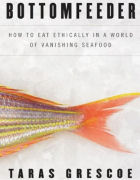 My other book was a bit more on the serious side. Bottomfeeder: How to eat ethically in a world of vanishing seafood by Taras Grescoe, has been sitting on my reading stack for months now. Like other books of the genre – the more prominent recent ones being what seems a slew by Michael Pollan, it’s a grim picture of what we’ve done to our food supply, what’s going to happen if we continue the way we are, and suggestions for what we can do about it. Unlike Pollan, Grescoe tackles the theme with a bit of a sense of humor, and a bit of self-deprecation – in his quest for information, detail, and some of the whys and wherefores, he finds himself, by conscious choice, eating his way through a selection of seafood that he already knows, based on his thesis, he oughtn’t to be. He excuses himself with “this will be the last time I ever…” sort of reasoning, which doesn’t really excuse it, but is the same reasoning that most of us use when confronted with ideas of the sort that we have some responsibility for the planet and our bodies in our choices of what we eat. The old “it’s already been caught, so if I don’t eat it, someone else will or it will go to waste” is a specious argument – lowering demand, in the long run, can only help towards a change in the approach of restaurants’, fishmongers’ and fisheries’ attitudes. One bite at a time. The book does not end on any sort of upbeat or hopeful note – Grescoe seems to have concluded that it’s unlikely change will come in time – one hopes he doesn’t actually believe that, as, if so, the only reason for having written the book would have been self-promotion and greed – and I don’t think that’s the case, I think he just doesn’t sum things up in a way that is as likely to lead towards change as he could have – he’s presented his case, he’s basically stated what he’s going to do about it, and he leaves it up to the individual reader to decide what he or she is going to do. The case statement was powerful, the summation to the jury of his peers could have used more punch. Still, overall it’s well worth a read – not to mention taking some action.
My other book was a bit more on the serious side. Bottomfeeder: How to eat ethically in a world of vanishing seafood by Taras Grescoe, has been sitting on my reading stack for months now. Like other books of the genre – the more prominent recent ones being what seems a slew by Michael Pollan, it’s a grim picture of what we’ve done to our food supply, what’s going to happen if we continue the way we are, and suggestions for what we can do about it. Unlike Pollan, Grescoe tackles the theme with a bit of a sense of humor, and a bit of self-deprecation – in his quest for information, detail, and some of the whys and wherefores, he finds himself, by conscious choice, eating his way through a selection of seafood that he already knows, based on his thesis, he oughtn’t to be. He excuses himself with “this will be the last time I ever…” sort of reasoning, which doesn’t really excuse it, but is the same reasoning that most of us use when confronted with ideas of the sort that we have some responsibility for the planet and our bodies in our choices of what we eat. The old “it’s already been caught, so if I don’t eat it, someone else will or it will go to waste” is a specious argument – lowering demand, in the long run, can only help towards a change in the approach of restaurants’, fishmongers’ and fisheries’ attitudes. One bite at a time. The book does not end on any sort of upbeat or hopeful note – Grescoe seems to have concluded that it’s unlikely change will come in time – one hopes he doesn’t actually believe that, as, if so, the only reason for having written the book would have been self-promotion and greed – and I don’t think that’s the case, I think he just doesn’t sum things up in a way that is as likely to lead towards change as he could have – he’s presented his case, he’s basically stated what he’s going to do about it, and he leaves it up to the individual reader to decide what he or she is going to do. The case statement was powerful, the summation to the jury of his peers could have used more punch. Still, overall it’s well worth a read – not to mention taking some action.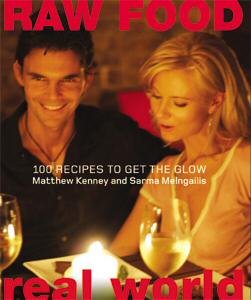 Buenos Aires – Okay, pet peeve in regard to book titles. Yes, book titles. If you have a catchy title, if you, or your editor or publisher, gave it some thought, why do you need a subtitle explaining what your book is all about? Is it really that difficult, with a book called Raw Food Real World for anyone to grasp the subject matter at hand? Does it need 100 Recipes to Get the Glow? Which, by the way, comes across to me at least as less explicative than the title – sure, I get the 100 recipes part, but “get the glow”?
Buenos Aires – Okay, pet peeve in regard to book titles. Yes, book titles. If you have a catchy title, if you, or your editor or publisher, gave it some thought, why do you need a subtitle explaining what your book is all about? Is it really that difficult, with a book called Raw Food Real World for anyone to grasp the subject matter at hand? Does it need 100 Recipes to Get the Glow? Which, by the way, comes across to me at least as less explicative than the title – sure, I get the 100 recipes part, but “get the glow”?